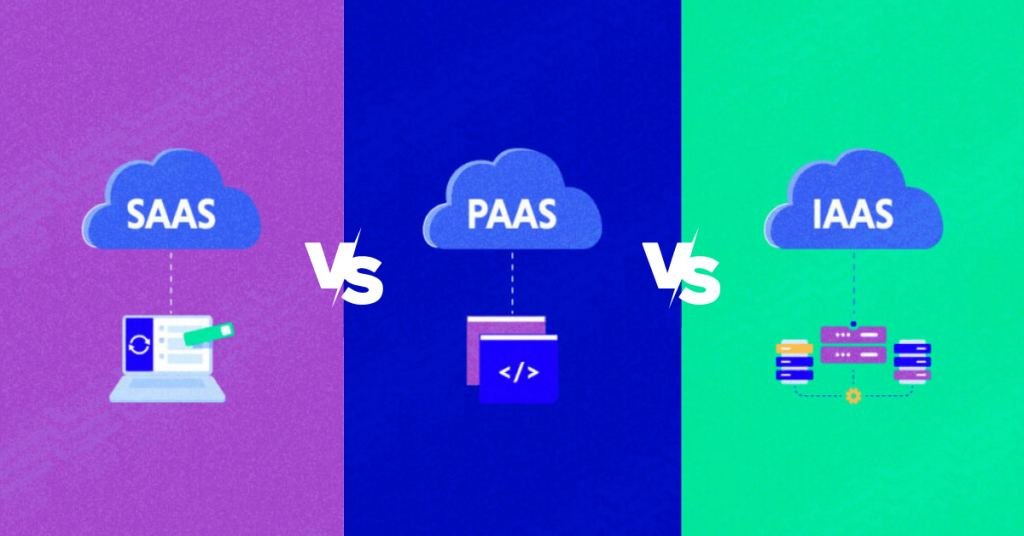Startups are known for their innovative ideas, disruptive technologies, and ambitious goals. However, the path to success is often riddled with challenges and obstacles. In the realm of Software as a Service (SaaS), startups face unique difficulties that can lead to failure if not properly addressed. In this blog post, we will explore the reasons why startups fail when adopting the SaaS business model and provide valuable insights for entrepreneurs aiming to build successful SaaS ventures.
Why Do SaaS Startups Fail?
Recent years have seen a rise in the popularity of SaaS (Software as a Service) firms, which many business owners consider a profitable venture. However, data shows that the vast majority of SaaS startups fail. In fact, studies show that over half of SaaS ventures fail because there is “no market need” for their product and that 90% of SaaS firms fail to achieve the desired level of success and never reach their financial goals.
Many things, such as lack of market research & validation, scalability & infrastructure issues, churn & customer retention, pricing & monetization challenges, etc contribute to this high failure rate.
Additionally, many SaaS startups fail to address and mitigate risks such as rising competition, regulatory changes, or shifts in market trends.
To overcome or avoid such failure we have identified key reasons why SaaS startups fail. So, let’s delve into the listed reasons for SaaS startups fail and the best practices to increase your chance of success.

5 Reasons Why Most SaaS Startups Fail
1. Lack of Market Research and Validation
Before diving headfirst into a SaaS startup, conducting thorough market research is essential. Unfortunately, many startups overlook this critical step, leading to their downfall. To avoid this pitfall, it is crucial to:
- Identify the target audience and their pain points: Understanding who your potential customers are and the challenges they face is vital for crafting a successful SaaS solution. Conduct surveys, interviews, and market analysis to gather valuable insights into your target audience’s needs.
- Analyze the competitor landscape: Ignoring your competition can be detrimental to your startup’s success. Research and evaluate existing SaaS solutions in the market to identify gaps, differentiation opportunities, and potential competitive advantages.
- Validate your idea with potential customers: Seek feedback from your target audience during the validation phase. Engage in conversations, conduct product demos, and gather user feedback to refine your SaaS offering based on real customer needs.
2. Insufficient Product-Market Fit
One of the primary reasons startups fail is the lack of product-market fit, where the product does not resonate with the target audience. To achieve product-market fit and increase the chances of success, startups should focus on the following:
- Iteration and adaptation based on user feedback: Actively listen to your early adopters and iterate on your product based on their feedback. Constantly refine your features, user experience, and functionality to align with customer needs and preferences.
- Alignment of product features with customer needs: Tailor your SaaS solution to solve the specific pain points of your target audience. Identify the essential features and functionalities that address their challenges most effectively and prioritize their development.
- Clear value proposition and unique selling points: Clearly communicate the value your SaaS product offers and how it differentiates from competitors. Articulate the unique selling points that make your solution compelling and superior to other alternatives in the market.
3. Scalability and Infrastructure Issues
Scalability is a critical aspect of SaaS businesses. Failure to plan for scalability and address infrastructure issues can result in system failures, downtime, and ultimately, loss of customers. To ensure scalability and robust infrastructure, startups should consider:
- Adequate server capacity and performance: Anticipate the growth of your user base and ensure that your server infrastructure can handle increased demand. Implement load balancing, auto-scaling, and performance optimization techniques to provide a seamless experience to your users.
- Scalability planning: Create a scalability roadmap that outlines how your SaaS solution will handle increased load and user growth. Consider factors such as database management, caching mechanisms, and distributed systems to ensure smooth scaling without compromising performance.
- Data management and security: Implement robust data management practices to handle large volumes of user data securely. Invest in data backup and disaster recovery mechanisms to protect against data loss. Additionally, prioritize data security by implementing encryption, access controls, and regular security audits.
4. Churn and Customer Retention
In the SaaS industry, customer retention is key to long-term success. High churn rates indicate that customers are not finding enough value in the product or are dissatisfied with the service. To mitigate churn and improve customer retention, startups should focus on the following areas:
- Effective onboarding process and user education: A smooth onboarding experience is crucial to get customers up and running quickly. Provide clear instructions, tutorials, and documentation to help users understand and utilize your SaaS product effectively. Offer personalized guidance and proactive support during the initial stages to address any questions or concerns.
- Robust customer support and issue resolution: Timely and efficient customer support plays a significant role in customer satisfaction. Establish clear channels of communication, such as email, chat, or ticketing systems, to address customer queries and issues promptly. Invest in a knowledgeable support team that can provide personalized assistance and resolutions.
- Continuous value delivery and adaptation: Regularly assess and improve your SaaS product to meet the evolving needs of your customers. Monitor usage patterns, gather feedback, and implement feature updates or enhancements that add value. Show your commitment to customer success by incorporating their feedback and ensuring your solution remains relevant.
3. Pricing and Monetization Challenges
Pricing is a complex aspect of the SaaS industry. Setting the right price and monetization strategy is critical to attracting and retaining customers while ensuring profitability. Startups should avoid the following pricing pitfalls:
- Incorrect pricing models: Choose a SaaS pricing model that aligns with your customer’s preferences and perceived value. Whether it’s a subscription-based model, usage-based model, or freemium model, understand the pros and cons of each and select the most suitable approach for your target market.
- Value-based pricing: Base your pricing on the value your SaaS product provides to customers rather than solely on costs. Conduct market research, understand the ROI your customers can achieve, and price your solution accordingly. Consider tiered pricing options that cater to different customer segments and their varying needs.
- Flexible pricing plans and options: Offer a range of pricing plans and options to accommodate different customer requirements. Provide a clear breakdown of features and benefits included in each plan. Consider offering trial periods, discounts, or custom pricing for larger enterprise clients to attract and retain customers.
4. Inadequate Marketing and Sales Strategies
Even with a great product, startups can fail if they neglect effective marketing and sales efforts. To avoid common marketing and sales pitfalls, startups should focus on the following:
- Targeted lead generation strategies: Identify the channels and tactics that best reach your target audience. Leverage content marketing, social media, search engine optimization, and targeted advertising to generate leads. Create valuable and educational content that positions your startup as an industry thought leader and attracts potential customers.
- Conversion and customer acquisition tactics: Streamline your sales process and optimize conversion rates. Implement effective lead nurturing campaigns, personalized demos, and free trials to convert leads into paying customers. Continuously analyze and refine your sales funnel to identify bottlenecks and optimize conversions.
- Comprehensive marketing and sales plan: Develop a well-defined marketing and sales strategy that aligns with your overall business goals. Outline your target market, positioning, messaging, and marketing channels. Create a sales playbook that guides your sales team and ensures consistency in messaging and customer engagement.
5. Leadership and Team Issues

Strong leadership and effective teamwork are crucial for startup success. Leadership that lacks domain expertise or a cohesive team dynamic can hinder progress and lead to failure. Startups should pay attention to the following aspects:
- Domain expertise and industry knowledge: Ensure that your leadership team possesses the necessary industry knowledge and expertise to navigate the SaaS landscape. Hiring experienced professionals who understand the nuances of the industry can contribute to making informed decisions and avoiding common pitfalls.
- Communication and collaboration within the team: Establish clear lines of communication and foster a collaborative environment within your startup. Encourage open and honest communication, active listening, and knowledge sharing. Facilitate cross-functional collaboration to leverage diverse skill sets and perspectives within the team.
- Talent acquisition and retention: Hire the right people who align with your startup’s vision and culture. Invest in employee development, training, and growth opportunities to retain top talent. Provide a positive work environment that encourages creativity, innovation, and teamwork.
Conclusion – SaaS Startups Fail
Starting a SaaS business comes with its own set of challenges, and many startups fail along the way. By understanding the reasons behind startup failures in the SaaS business model, entrepreneurs can proactively address these issues and increase their chances of success. Conducting thorough market research, achieving product-market fit, planning for scalability, prioritizing customer retention, devising effective pricing and marketing strategies, and nurturing strong leadership and teamwork are key factors in building a successful SaaS startup. With the right approach and mindset, entrepreneurs can navigate the complexities of the SaaS industry and build thriving ventures that deliver value to customers while driving growth and profitability.
Remember, success in the SaaS industry requires continuous learning, adaptability, and a relentless focus on providing exceptional value to customers. By avoiding common pitfalls and implementing best practices, your startup can thrive in this competitive landscape and emerge as a leader in the SaaS space. Good luck on your entrepreneurial journey!
FAQs – Why SaaS Startups fail
SaaS company failure rates can vary, but studies suggest that the failure rate is relatively high. According to some estimates, around 90% of startups fail, of which 20% never survive more than 2 years. Also, SaaS companies are not immune to this trend. However, it’s important to note that many factors contribute to a company’s success or failure, including market conditions, competition, management decisions, and product-market fit. While failure is a possibility, many SaaS companies have also achieved significant success and growth.
SaaS companies face several common struggles, including:
Market competition
Customer acquisition and retention
Scalability and Infrastructure
Pricing and monetization
Funding and cash flow
Regulatory compliance and data security
Customer support and success
Technology evolution
It’s important to note that each SaaS company’s struggles may vary based on factors such as industry, target market, and company size.
Startups can fail due to various reasons related to their business models. All the above 5 key reasons mentioned in the blog post are important to note that these factors are not exhaustive. Also, startups can fail for a combination of reasons unique to their specific circumstances.
The success rate of SaaS companies can vary widely. While specific success rates are difficult to determine, around 20% of SaaS startups have achieved significant success and growth. Factors such as market conditions, competition, product-market fit, execution, and management play crucial roles in determining a company’s success. Although SaaS companies face challenges, there are numerous examples of successful SaaS businesses that have experienced substantial revenue growth and market dominance.

